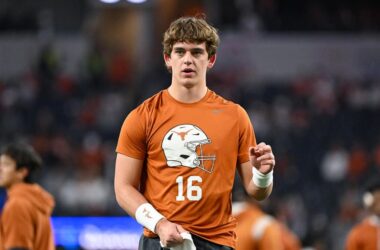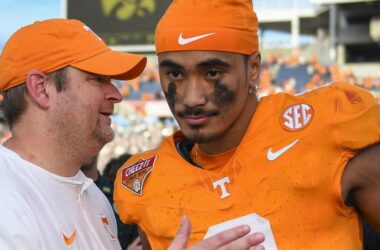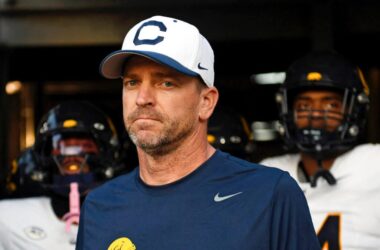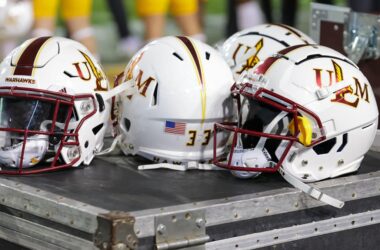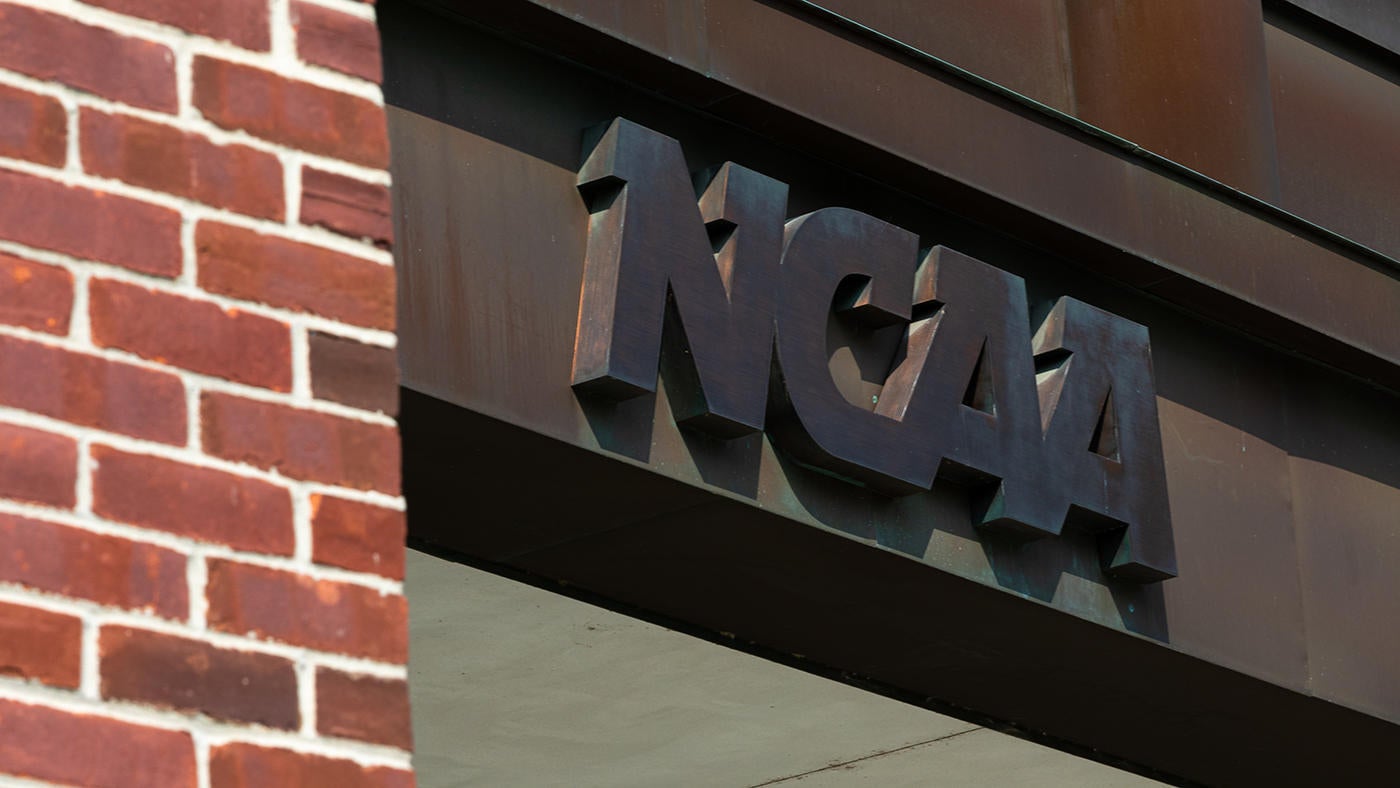
A brand new period of faculty athletics is upon us, and leaders shouldn’t have a lot time to organize for the transformative age.
Faculty sports activities is on the precipice of fixing perpetually as leaders from the NCAA and several other power-conference ranges have agreed to destroy the amateurism mannequin and share income with gamers by coming to phrases on settling a multi-billion greenback lawsuit that threatened to bankrupt the collegiate athletics enterprise.
The NCAA Board of Governors voting Wednesday to just accept the anti-trust lawsuit settlements and transfer ahead was a pivotal rubber-stamping. All 5 Energy 5 leagues have additionally signed off on the settlement.
The $2.8 billion settlement within the Home v. NCAA case, a landmark authorized battle, has far-reaching implications anchored by income sharing and the enlargement of roster sizes, which could additionally spark extra authorized battles with Title IX implications. Within the fast future, the authorized settlement is transformative for gamers as a result of not solely will previous athletes be compensated for prior restrictions on incomes from their identify, picture, and likeness by way of the $2.8 billion settlement, however the settlement units the stage for a future revenue-sharing mannequin, a primary within the NCAA’s lengthy historical past, benefiting hundreds of collegiate athletes beginning as quickly as Fall 2025.
The NCAA and its conferences will hammer out the small print of recent revenue-sharing and governance fashions over the following few months, however a framework was revealed in inner paperwork uncovered by a number of shops in latest weeks. Athletic departments should now put together for brand new line objects that might balloon as much as $30 million yearly because the richest faculties put together to share upwards of $22 million in income with gamers whereas increasing roster sizes with limitless scholarships, in line with these paperwork.
The NCAA agreed to pay the previous damages over the following 10 years ($277 million yearly) and can fund the funds by reducing into its income shares with Division I faculties. Had the case gone to trial in January 2025, the NCAA and its energy conferences risked being on the hook for greater than $4.2 billion due to a triple multiplier tied to antitrust legislation. Even worse, had a settlement not been reached, the events risked $20 billion in again damages tied to a number of antitrust lawsuits that might have pressured them into chapter 11, in line with paperwork circulated final week amongst convention presidents.
“An important half concerning the settlement — and let’s face it, there’s nonetheless lots of work to be completed there — is it creates some readability and a few visibility on an entire bunch of points which have type of been roiling all people for some time,” NCAA president Charlie Baker mentioned final week. “The opposite factor it does is create predictability and stability for faculties. It creates an amazing alternative for student-athletes.”
Discussions regarding a settlement construction have been ongoing for practically a 12 months. The NCAA is chargeable for 40% of the $2.8 billion settlement, and the remaining 60% will come from lowering its income distributions to the 32 Division I conferences over the following 10 years ($1.6 billion). The NCAA is using a formulation based mostly on income distribution introduced to every league over a nine-year interval beginning in 2016, which leans closely on basketball items tied to NCAA Match participation, in line with Yahoo Sports activities. The Energy 5 conferences – ACC, Large Ten, Large 12, Pac-12 and SEC – can pay 24% of the general damages, adopted by the Group of 5 at 10%.The FCS is on the hook for 14% and non-football conferences in Division I’ll pay 12% of the general settlement, in line with paperwork reviewed by CBS Sports activities.
The commissioners of the 22 non-FBS conferences made a late push Monday to flip the monetary construction in order that the Energy 5 conferences can be chargeable for 60% of the withheld NCAA distributions over the following 10 years, however that effort failed within the eleventh hour when the NCAA’s Board of Administrators accredited the aforementioned settlement phrases that night. The 27 conferences outdoors the present Energy 4 leagues will probably be on the hook for 60% of the NCAA’s withheld distributions.
Past the financial figures and future income sharing, the settlement additionally additional widens the hole between the 4 energy conferences fueled by soccer income and the Group of 5 conferences within the Soccer Bowl Subdivision. Energy conferences are additionally anticipated to design a brand new governance construction to implement guidelines that will probably be separate from its compatriots. The laws is anticipated to offer limitless scholarships whereas restructuring roster limits, which might minimize down on the variety of energetic soccer gamers but in addition enable applications to award extra scholarships for sports activities like baseball, which has lengthy been caught on 11.7 scholarships to share with a workforce of practically 40 gamers.
Additional complicating the relationships amongst conferences is the monetary hole exacerbated by a just lately accredited income construction with the Faculty Soccer Playoff, which shares most of its income with the Large Ten and SEC.
Merely put, simply because the most important lawsuit in NCAA historical past is settled and gamers will quickly be paid after years of carrying a multi-billion greenback business on their backs, that does not imply the long run will probably be with out monumental challenges that might result in the elimination of sports activities and additional separation between the haves and have-nots amongst athletic departments within the FBS.
How a lot will present and future gamers be paid?
The faculties among the many Energy 4 conferences are anticipated to pay present gamers roughly $20 million yearly as a part of a brand new revenue-sharing program. The determine will fluctuate from faculty to high school, reflecting an estimated share of twenty-two% of annual income generated by Energy 4 faculties.
The settlement is anticipated to incorporate a cap on revenue-sharing, which might begin as excessive as $22 million yearly per faculty, in line with Yahoo Sports activities.
“Native choices, I feel, are good at occasions the place faculties which have extra assets can do extra,” ACC commissioner Jim Phillips mentioned final week. “… So some flexibility in a remaining choice and a remaining settlement will probably be useful for our faculties.”
Former Pac-12 faculties are included within the go well with as a part of the pay for previous damages. In accordance with a number of stories, the 5 energy conferences are chargeable for roughly 40% of the NCAA’s faculty reductions for damages (between $597.6 million to $730.4 million). These faculties are anticipated to see a median drop between $1 million and $2 million in annual income from the NCAA to fund the settlement.
Group of 5 faculties are chargeable for 17% ($255.6 million to $312.4 million) and Soccer Championship Subdivision conferences will share 22% of the reductions ($327.6 million to $400.4 million).
In the meantime, the NCAA is anticipated to cut back working prices by $18 million a 12 months, dipping into reserves and insurance coverage to assist fund its portion of the authorized settlement ($1.1 billion), in line with Yahoo Sports activities.
Will the mathematics work within the Group of 5?
Many business leaders, significantly these within the Group of 5 conferences, are involved revenue-sharing might ship extra athletic division budgets into the purple, resulting in the elimination of sports activities applications completely. Many athletic departments are backed by pupil charges from the college and state funds, and a few already function at a deficit.
Greater than 50% of Group of 5 faculties earn lower than $40 million yearly in income. The Energy 5 conferences (then together with the Pac-12) mixed for greater than $3.3 billion in income for the 2022 fiscal 12 months, in line with federal tax information. Ohio State earned $251.6 million in income final 12 months to guide all Energy 5 faculties.
“You actually have to consider [Power Four] as totally different,” Home plaintiff legal professional Jeffrey Kessler mentioned throughout a panel at Howard College in April, in line with Yahoo Sports activities. “The rationale we get tied in knots is as a result of we conflate these faculties who’ve developed these gigantic unbiased business companies with the faculties who’re nonetheless simply academic establishments with extracurricular actions. Whenever you attempt to provide you with one rule for all, you go loopy. It’s a must to take a look at the faculties in a different way. For those with the cash, there may be loads of cash to compensate the athletes and share it with the ladies’s sports activities.”
Title IX and antitrust questions stay
Plaintiffs within the Home go well with are anticipated to surrender their proper to file antitrust lawsuits in opposition to the NCAA’s guidelines for 10 years, and the plaintiff attorneys are anticipated to drop two extra pending antitrust instances in opposition to the NCAA. This settlement might be strengthened if the NCAA is lastly profitable in lobbying Congress, which might codify the settlement with laws defending the NCAA and its members with an antitrust exemption. Congress, nonetheless, has been gradual to behave after being introduced with greater than a dozen proposals regarding NIL guardrails during the last a number of years.
Title IX additionally complicates issues, and future courtroom battles might loom. The unstated fact amongst directors is it appears unlikely they may advocate for equal pay for athletes whose sports activities earn lower than soccer and males’s basketball.
“It is very doubtless we’ll see non-revenue sports activities get massacred,” mentioned Jason Belzer, president of Scholar Athlete NIL. “Title IX goes to be a really huge battle. How are you going to cease it? It will be robust.”
Many finer particulars are but to be finalized. Attorneys will quickly draft the phrases of the settlement settlement, which they may then current to Senior District Choose Claudia Wilken in California’s Northern District at a preliminary listening to but to be scheduled.
Roster sizes and scholarship limits will change
The brand new mannequin will doubtless carry scholarship limits but in addition restrict roster sizes. These particulars are anticipated to be finalized within the coming months on the convention degree and will fluctuate inside Division I.
Theoretically, soccer roster sizes might be trimmed from 120 to 100 gamers, however scholarships might be supplied to all gamers as an alternative of the at the moment mandated 85. For baseball-crazy conferences like these within the energy construction, applications might lastly present scholarships to each participant on the roster slightly than often-criticized equivalencies of 11.7 scholarships which are shared amongst 27 gamers on a 39-man roster.
Once more, there may be a lot to think about and focus on earlier than numbers are finalized on the convention degree over the following 12 months.
What occurs to NIL collectives?
The NCAA has additionally proposed a brand new enforcement infrastructure to focus on pay-for-play and booster-led NIL collectives, although the small print stay imprecise, in line with paperwork obtained final week by Yahoo Sports activities.
The paperwork contend the courtroom will reaffirm guidelines round compensation, “together with the prohibition on booster funds if they aren’t true NIL.” Colleges will even be supplied “financial incentives” to deal with NIL collectives inside the college.
“Collectives aren’t going to go away if there is a wage cap,” mentioned Russell White, president of The Collective Affiliation. “Universities will proceed to need to compete above and past (the bottom income shares).”
Ten-year NCAA income discount projections
- FBS Energy 5: $597.6 million to $730.4 million
- FBS Group of 5: $255.6 million to $312.4 million
- FCS: $327.6 million to $400.4 million
- Large Ten: $149 million to $182.6 million
- ACC: $141.3 million to $172.7 million
- SEC: $111.6 million to $136.4 million
- Large 12: $99 million to $121 million
- Pac-12: $96.3 million to $117.7 million

